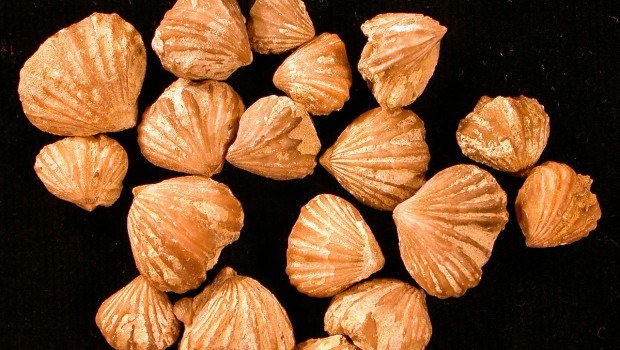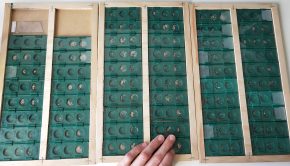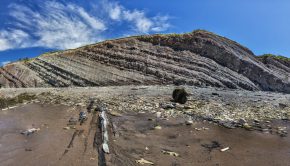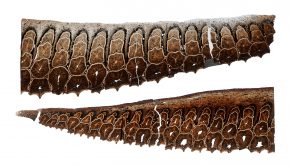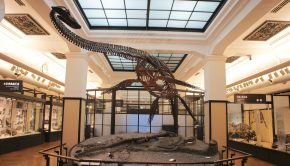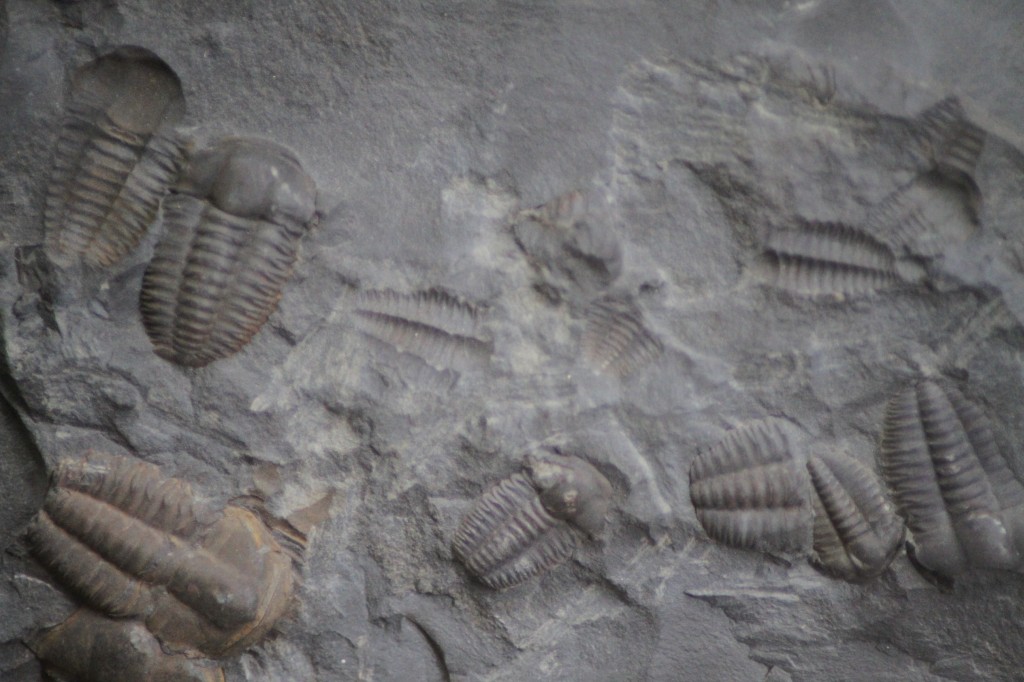Episode 40: Brachiopods
Brachiopods are some of the most common fossils to be found in rocks worldwide. Their thick, hard and (often) calcareous shells make them preferentially preserved in the fossil record. We probably all have found one, but how many of us overlooked them at the time? What can a brachiopod tell us? How big a role have they played throughout geological time?
In this two-part episode we speak to Prof. Lars Holmer, University Uppsala, Sweden, all about the humble brachiopod.
Part one:
Podcast: Download (Duration: 25:30 — 35.0MB)
Part two:

The three main groups of living brachiopods – Rhynchonelliforms, Craniiforms, and Linguliforms. Image credit: Lars Holmer.
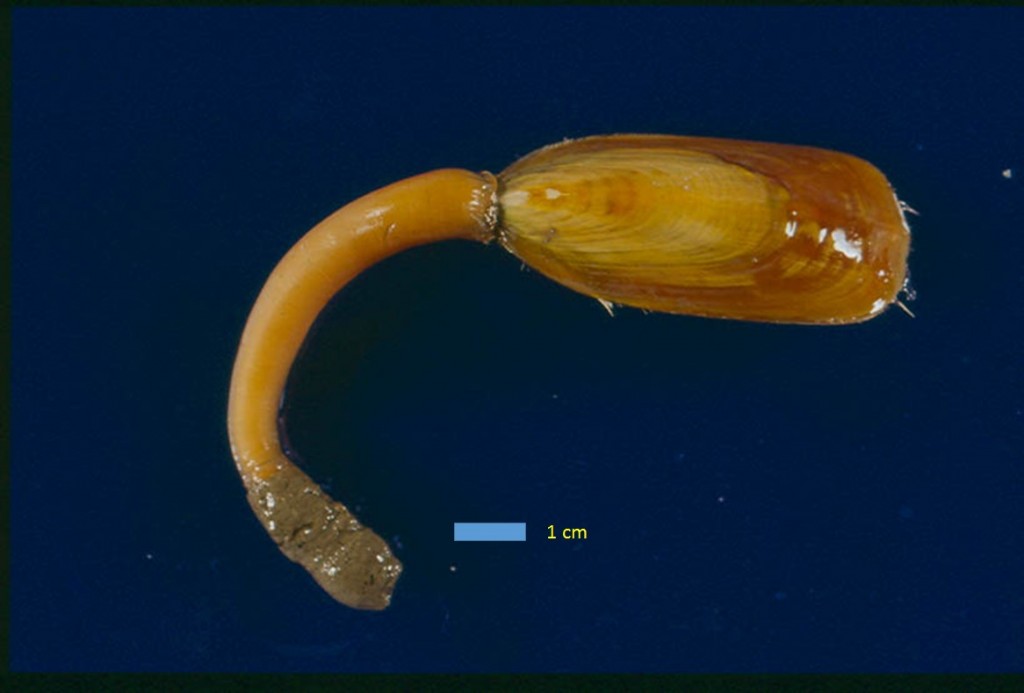
The classic “living fossil” Lingula uses the fleshy pedicle for digging into the sediment and lives infaunally. The phosphatic lingulids are the only living brachiopods that are used as a source of food. The vastly more abundant calcareous-shelled rhynchonelliforms are generally considered to be inedible. Image credit: Lars Holmer.
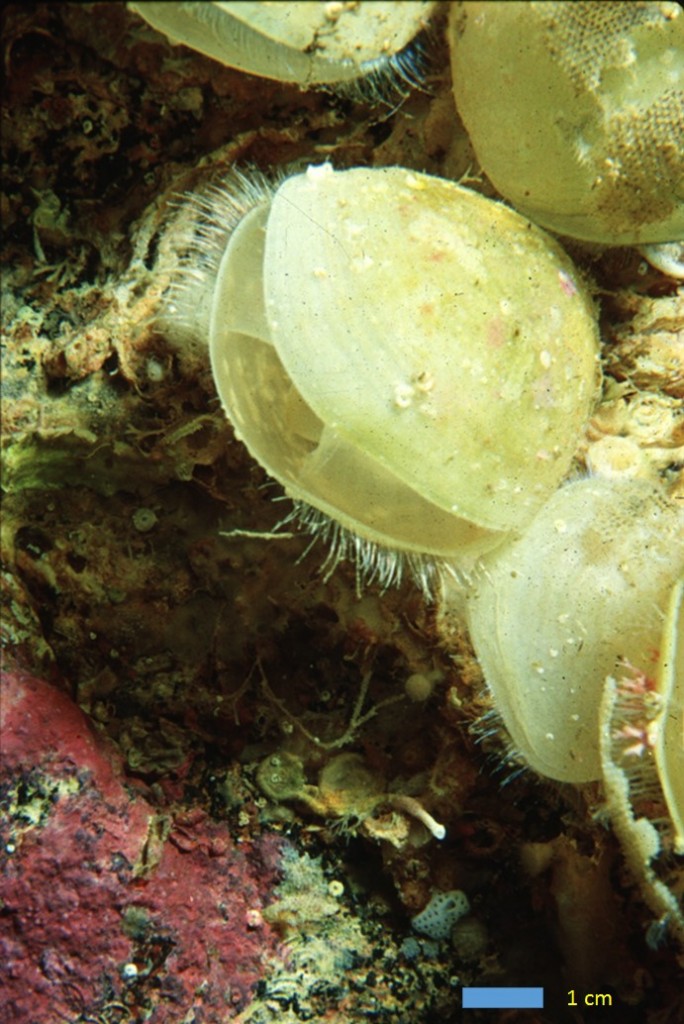
The calcareous-shelled rhynchonelliform Liothyrella lives permanently attached to hard substrates. The lophophore can be seen inside the open shell and the valves have a ring of chitinous bristles – called setae.

Yuganotheca is a new tubular fossil from the Cambrian (Stage 3) Chengjiang Lagerstätte (Yunnan, China) that exhibits an unusual combination of phoronid, brachiopod and tommotiid (Cambrian problematica) characters, notably a pair of agglutinated valves, enclosing a horseshoe-shaped lophophore, supported by a lower bipartite tubular attachment structure with a long pedicle with coelomic space. Scale bar in millimeters. Image credit: Zhifei Zheng

Detail of the upper part of Yuganotheca showing the agglutinated valves, and the horseshoe-shaped lophophore. Scale bar in millimeters. Image credit: Zhifei Zheng

Scanning Electron Micrographs of Yuganotheca – a, entire individual, a composite of SEM micrographs. b, anterior margin of the upper valves. c-d, close-up view of the siliceous grains on the surface of valves. e, Detail of the median collar. Image credit: Zhifei Zheng and Lars Holmer.

Artistic reconstruction of Yuganotheca with inferred semi-infaunal life position. Image credit: D. Fu and Z. Zhang.

